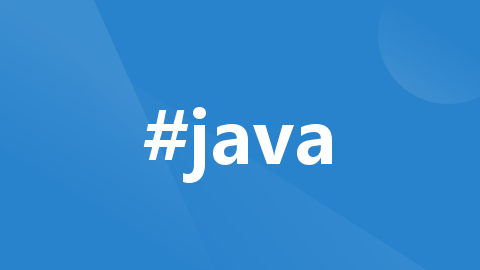
C# 流Stream详解(1)——读写txt和二进制文件
我们知道在磁盘上只会存储二进制数据,文本文件最后也会被保存为二进制文件,我们调用接口读取和写入时虽然用的是string,但到底层一定是byte[]。这就涉及到string到byte[]的编码和byte[]到string的解码,只不过对于文本文件而言,有确定的编码解码规则,我们不需要关心。如果文件非常大,还是要用上面的方法读文件,否则一次性读进来,内存会爆。电脑手机上有各种各样的文件,例如视频文件、
【读写txt文件】
电脑手机上有各种各样的文件,例如视频文件、图片文件、文本文件,其中读写txt文件是最简单的,有多种方式,
使用StreamReader和StreamWriter
//读取文件
string path = @"C:\example.txt"; // 文件路径
using (StreamReader reader = new StreamReader(path))//使用using语句来确保资源被正确释放,以避免资源泄漏
{
string line;
while ((line = reader.ReadLine()) != null) // 逐行读取文件内容,每次读取一行,读取到末尾的时候为空
{
Console.WriteLine(line); // 输出每行内容到控制台
}
}
//写入文件
string path = @"C:\example.txt"; // 文件路径
using (StreamWriter writer = new StreamWriter(path))
{
string content = "Hello, World!"; // 要写入文件的内容
writer.WriteLine(content); // 写入一行内容到文件
}使用TextReader和TextWriter
//读取文件
string path = @"C:\example.txt"; // 文件路径
using (TextReader reader = new StreamReader(path))
{
string line;
while ((line = reader.ReadLine()) != null) // 逐行读取文件内容
{
Console.WriteLine(line); // 输出每行内容到控制台
}
}
//写入文件
string path = @"C:\example.txt"; // 文件路径
using (TextReader reader = new StreamReader(path))
{
string line;
while ((line = reader.ReadLine()) != null) // 逐行读取文件内容
{
Console.WriteLine(line); // 输出每行内容到控制台
}
}使用FileStream
//读取文件
string path = @"C:\example.txt"; // 文件路径
using (FileStream fs = new FileStream(path, FileMode.Open, FileAccess.Read))
{
using (StreamReader reader = new StreamReader(fs))
{
string line;
while ((line = reader.ReadLine()) != null) // 逐行读取文件内容
{
Console.WriteLine(line); // 输出每行内容到控制台
}
}
}
//写入文件
string path = @"C:\example.txt"; // 文件路径
using (FileStream fs = new FileStream(path, FileMode.Create, FileAccess.Write))
{
using (StreamWriter writer = new StreamWriter(fs))
{
string content = "Hello, World!"; // 要写入文件的内容
writer.WriteLine(content); // 写入一行内容到文件
}
}使用File类提供的静态方法
上面几种方法代码都很长,一般来说我们几乎不会使用这些方法,使用File类提供的静态方法更便捷一些。如果文件非常大,还是要用上面的方法读文件,否则一次性读进来,内存会爆。
如果期望追加写入,还是要用上面的方法,StreamWriter的参数设置为true就好,例如StreamWriter sw = new StreamWriter(filePath, true);
//读取文件
string path = @"C:\example.txt"; // 文件路径
string content = File.ReadAllText(path); // 读取整个文件内容
Console.WriteLine(content); // 输出文件内容到控制台
//写入文件
string path = @"C:\example.txt"; // 文件路径
string content = "Hello, World!"; // 要写入文件的内容
File.WriteAllText(path, content); // 将内容写入文件
//上面是一次性读取写入,得到的对象是一个非常大的string,但有时我们需要逐行处理,就要逐行读取写入
string path = @"C:\example.txt"; // 文件路径
string[] lines = File.ReadAllLines(path); // 读取所有行
foreach (string line in lines)
{
Console.WriteLine(line); // 在控制台输出每一行
}
string path = @"C:\example.txt"; // 文件路径
string[] lines = { "第一行内容", "第二行内容", "第三行内容" }; // 字符串数组,每个元素将成为一行
File.WriteAllLines(path, lines); // 将字符串数组中的所有元素写入到文件中
文本编码
如果读出来的内容是乱码,建议了解文本编码,在读取和写入文本时都可以传递文本编码参数。
【读写二进制文件】
使用BinaryWriter和BinaryReader
我们知道在磁盘上只会存储二进制数据,文本文件最后也会被保存为二进制文件,我们调用接口读取和写入时虽然用的是string,但到底层一定是byte[]。这就涉及到string到byte[]的编码和byte[]到string的解码,只不过对于文本文件而言,有确定的编码解码规则,我们不需要关心。
而读写二进制文件,需要你自己设置编码解码规则。编码解码的类型不止是string,可能是各种类型的。
//写入文件
using (BinaryWriter writer = new BinaryWriter(File.Open("file.bytes", FileMode.Create)))
{
bool boolValue = true;
writer.Write(boolValue);
int intValue = 123;
writer.Write(intValue);
float floatValue = 3.14f;
writer.Write(floatValue);
double doubleValue = 3.1415926;
writer.Write(doubleValue);
char charValue = 'A';
writer.Write(charValue);
string content = "永恒之星";
byte[] bytes = Encoding.UTF8.GetBytes(content);
writer.Write(bytes.Length); // 写入字符串长度
writer.Write(bytes); // 写入字符串字节数组
}读取文件时按照写入的顺序一个个读取即可。
//读取文件
using (BinaryReader reader = new BinaryReader(File.Open("file.bytes", FileMode.Open)))
{
bool boolValue = reader.ReadBoolean();
Debug.Log(boolValue);
int intValue = reader.ReadInt32();
Debug.Log(intValue);
float floatValue = reader.ReadSingle();
Debug.Log(floatValue);
double doubleValue = reader.ReadDouble();
Debug.Log(doubleValue);
char charValue = reader.ReadChar();
Debug.Log(charValue);
int length = reader.ReadInt32();
byte[] bytes = reader.ReadBytes(length);
string content = Encoding.UTF8.GetString(bytes);
Debug.Log(content);
}使用MemoryStream
上面的问题在于是一次次读写的,会有多次IO开销,可以借助MemoryStream将文件内容先一次性读写到内存中,然后再读写到磁盘中。
另外,我们读写数据时是一行行代码读写的,如果有一万个数据,当然不可能写一万行代码,所以对同类型的数据需要将数据个数也写入,用for循环减少代码量。
//写入文件
using (MemoryStream ms = new MemoryStream())
{
using (BinaryWriter writer = new BinaryWriter(ms))
{
bool boolValue = true;
writer.Write(boolValue);
int count = 5;
writer.Write(count);
for (int i = 0; i < count; i++)
{
int intValue = 123;
writer.Write(intValue);
}
float floatValue = 3.14f;
writer.Write(floatValue);
double doubleValue = 3.1415926;
writer.Write(doubleValue);
char charValue = 'A';
writer.Write(charValue);
string content = "永恒之星";
byte[] bytes = Encoding.UTF8.GetBytes(content);
writer.Write(bytes.Length); // 写入字符串长度
writer.Write(bytes); // 写入字符串字节数组
}
File.WriteAllBytes("file.bytes", ms.ToArray());//一次性写入磁盘
}
//读取文件
using (MemoryStream ms = new MemoryStream(File.ReadAllBytes("file.bytes")))//一次性从磁盘读取数据
{
using (BinaryReader reader = new BinaryReader(ms))
{
bool boolValue = reader.ReadBoolean();
Debug.Log(boolValue);
int count = reader.ReadInt32();
for (int i = 0; i < count; i++)
{
int intValue = reader.ReadInt32();
Debug.Log(intValue);
}
float floatValue = reader.ReadSingle();
Debug.Log(floatValue);
double doubleValue = reader.ReadDouble();
Debug.Log(doubleValue);
char charValue = reader.ReadChar();
Debug.Log(charValue);
int length = reader.ReadInt32();
byte[] bytes = reader.ReadBytes(length);
string content = Encoding.UTF8.GetString(bytes);
Debug.Log(content);
}
}拓展
如果我们有很多不同类型的数据需要写到不同的二进制文件中,而且后期的数据结构还可能会修改,那么每次自己读写就非常繁琐,维护成本很高。我们需要借助些序列化工具帮忙读写,我们只需要定义好数据结构,并填充数据即可。这些工具有BinaryFomatter、ProtoBuf、FlatBuffer,更具需求选择合理的工具。
更多推荐
 已为社区贡献2条内容
已为社区贡献2条内容









所有评论(0)